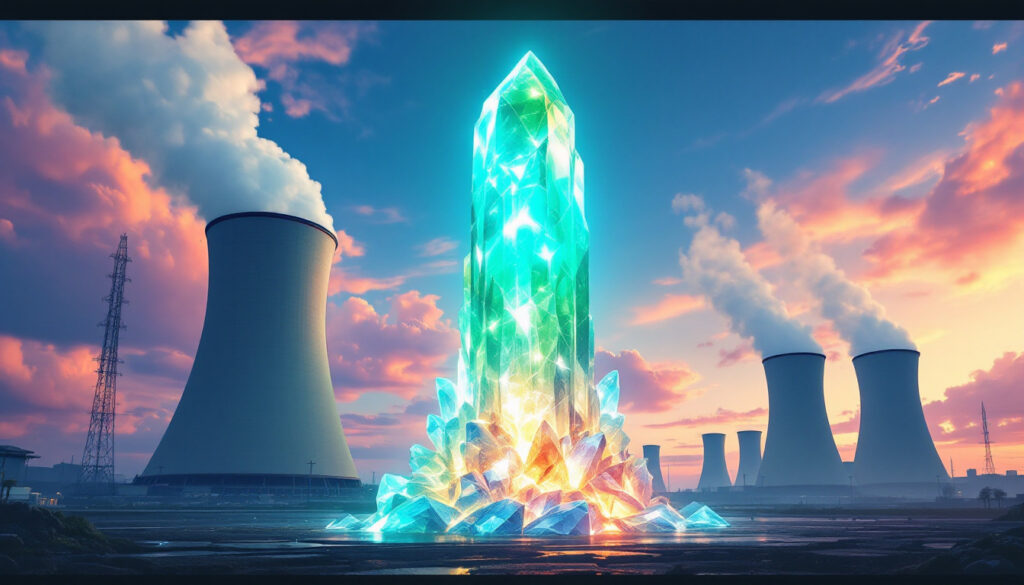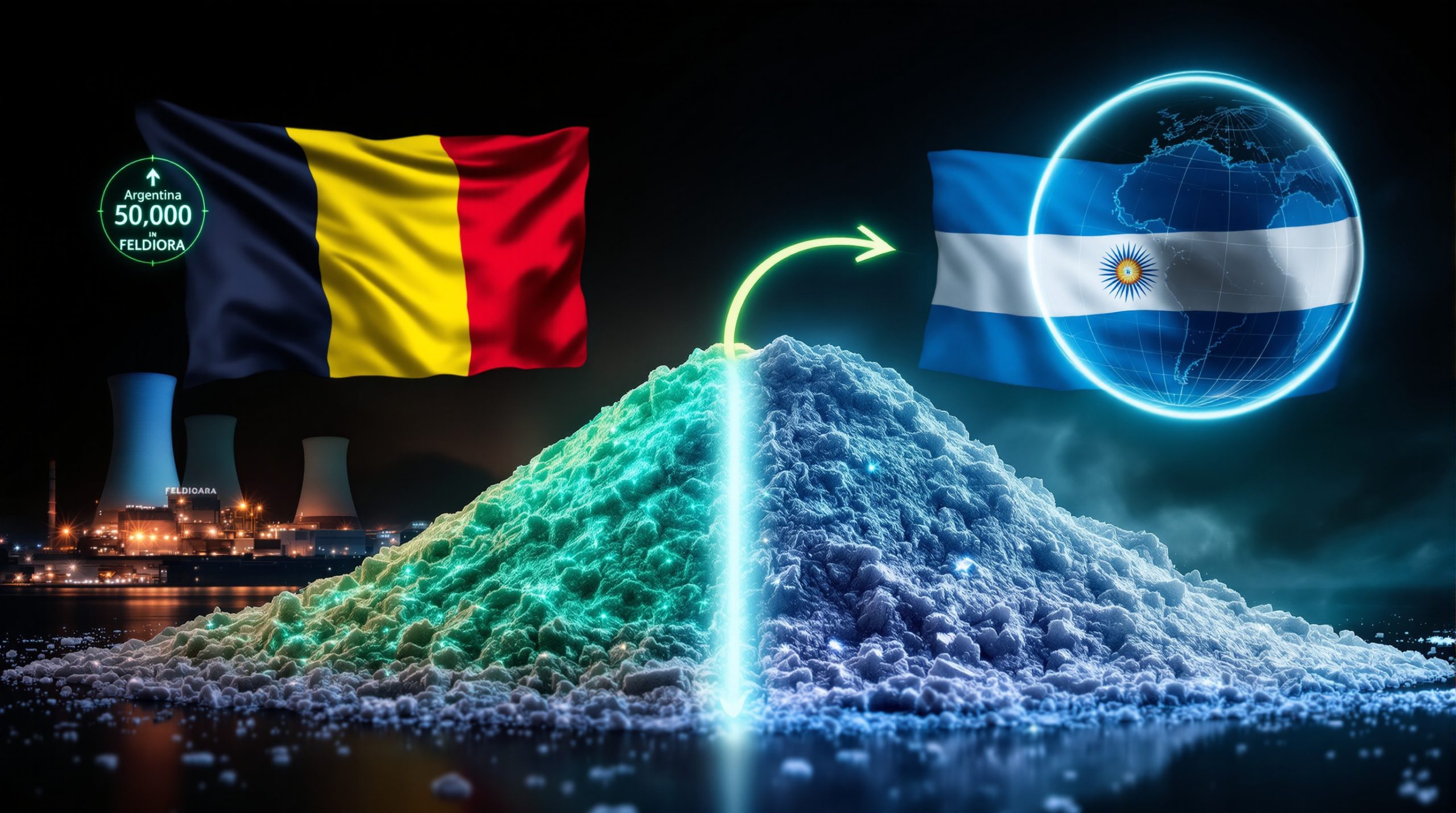Unearthing Uranium: The Global Revival of Nuclear Energy and Mining Dynamics
The uranium mining sector is experiencing a significant resurgence as nations prioritize nuclear energy to meet decarbonization targets and ensure energy security. With Kazakhstan dominating 45% of global uranium production—primarily supplying China—Western countries face supply chain challenges, prompting renewed investments in domestic mining and strategic international partnerships. Technological innovations, regulatory reforms, and sustainable practices are reshaping the industry, while projects like Pakistan's Reko Diq and North American developments highlight the race to secure uranium resources. This report examines the drivers of uranium demand, geopolitical dynamics, and the sector's role in the global unearthing uranium and nuclear revival.
Why Is Uranium Mining Experiencing a Global Revival?
Nuclear Energy's Resurgence in Climate Strategies
Global uranium demand has surged as countries like the U.S., France, and India extend nuclear plant lifespans and commission new reactors to replace fossil fuels. The International Atomic Energy Agency (IAEA) projects a 26% increase in nuclear capacity by 2030, necessitating a corresponding rise in uranium supply.
Nuclear power's ability to provide stable, low-carbon baseload electricity complements intermittent renewables, making it central to net-zero strategies. For instance, the European Union's taxonomy for sustainable activities now classifies nuclear energy as a green investment, accelerating project approvals.
Post-Fukshima Reassessment and Policy Shifts
Following initial hesitations after the 2011 Fukushima disaster, governments are reassessing nuclear energy's risk-benefit ratio amid energy crises and climate urgency. The U.S. Inflation Reduction Act (2022) includes tax credits for existing nuclear plants, while Japan restarted 12 reactors as of 2025.
These policy shifts have reinvigorated uranium market dynamics, with spot prices rising from $30/lb in 2020 to over $90/lb in 2025.
Kazakhstan's Strategic Dominance
Kazakhstan's uranium production, which reached 21,800 tonnes in 2024, underscores its geopolitical leverage. However, 70% of its output is contracted to China, creating supply bottlenecks for Western nations. This reliance has spurred efforts to diversify sources, with the U.S. Department of Energy committing $3.5 billion to domestic uranium enrichment in 2024.
What Factors Are Driving the Uranium Supply Crunch?
Accelerating Nuclear Energy Demand
Over 60 reactors are under construction globally, with China and India leading expansion. China aims to triple its nuclear capacity to 300 GW by 2035, requiring 15,000 tonnes of annual uranium imports.
Meanwhile, small modular reactors (SMRs), such as NuScale's projects in Romania, are gaining traction, further straining supply. As unearthing uranium and nuclear revival becomes increasingly important, the development of smaller reactors presents both challenges and opportunities for the industry.
Geopolitical Constraints and Export Policies
Kazakhstan's uranium trade alignment with China has prompted Western nations to seek alternatives. Australia, holding 28% of global uranium reserves, lifted export restrictions to the U.S. in 2023 under the AUKUS pact.
Similarly, Canada's Cameco has expanded production at its Cigar Lake mine by 20% to fill supply gaps. The Russian uranium export ban has further complicated global supply chains, forcing many countries to seek alternative sources.
Lagging Exploration and Development
Despite a 35% increase in exploration spending since 2021, mine development timelines remain protracted. The average uranium project takes 10–15 years to reach production, exacerbating shortfalls.
The OECD's 2025 Red Book highlights that only 70% of projected demand through 2040 is covered by existing mines and committed projects.
How Is the West Preparing for Nuclear Resurgence?
Securing Domestic Supply Chains
The U.S. Nuclear Fuel Security Act (2023) allocates $2.7 billion to revive idle mines and processing facilities, targeting 25% domestic uranium production by 2030.
In Canada, Saskatchewan's Athabasca Basin has seen a 40% uptick in drilling permits, with NexGen Energy's Arrow project slated to produce 29 million pounds annually. These developments highlight the increasing importance of comprehensive uranium mining analysis in strategic planning.
Strategic Partnerships and Alliances
The EU's Euratom Supply Agency signed a 10-year agreement with Namibia in 2024, ensuring 3,000 tonnes/year of uranium from the Husab mine.
Additionally, the U.S.-backed Sask Uranium Hub unites 12 mining firms to streamline production and export logistics.
Regulatory Streamlining
Australia's Critical Minerals Strategy (2025) fast-tracks approvals for uranium projects, reducing permitting times from seven to three years.
The U.S. Environmental Protection Agency (EPA) has also updated radiation standards, enabling in-situ recovery (ISR) mining in Texas and Wyoming.
What Role Does Kazakhstan Play in Global Uranium Markets?
Investment Incentives and Reforms
Kazakhstan's 2023 Mining Code overhaul offers tax holidays and simplified licensing to attract foreign investors. National Atomic Company Kazatomprom reported a $500 million FDI inflow in 2024, with partnerships including France's Orano and Japan's Marubeni.
Production Modernization and Expansion
Kazatomprom aims to increase ISR mining efficiency by 15% through digitized monitoring systems, boosting annual output to 25,000 tonnes by 2026.
The company's joint venture with China General Nuclear Power Group (CGN) has developed the Semizbai-U mine, adding 4,000 tonnes/year.
Balancing East-West Trade Dynamics
While 70% of Kazakh uranium flows to Asia, the EU secured a 2025 agreement for 2,000 tonnes/year via the Trans-Caspian route, bypassing Russian infrastructure.
How Are Mining Companies Adapting to Market Conditions?
Accelerated Project Development
Cameco resumed production at its McArthur River mine in 2023, achieving full capacity of 18 million pounds/year within 12 months.
Paladin Energy's Langer Heinrich Mine in Namibia restarted operations in 2024, targeting 6 million pounds/year.
Technological Innovations
ISR mining now accounts for 60% of global uranium production, reducing water usage by 50% compared to conventional methods.
BHP's Olympic Dam employs AI-driven drilling systems, improving ore recovery rates by 12%. These advances create significant uranium investment opportunities for forward-thinking investors.
Sustainability Initiatives
Rio Tinto's Ranger Mine in Australia completed a $200 million rehabilitation project in 2024, restoring 1,000 hectares of land.
Denison Mines' closed-loop water systems at Wheeler River have reduced freshwater consumption by 90%.
What Are the Key Uranium Mining Projects to Watch?
Reko Diq Copper-Gold Project (Pakistan)
After a decade-long legal dispute, Barrick Gold secured a $7 billion investment to develop Reko Diq, which holds 5.9 billion pounds of uranium resources.
Phase one production, starting in 2027, will yield 28 million pounds annually, bolstering Pakistan's energy independence.
North American Revivals
Energy Fuels' La Sal Complex in Utah reopened in 2024, producing 1.2 million pounds/year.
The U.S. Department of Energy also funded $75 million for uranium extraction from phosphate deposits in Florida.
Australian Resurgence
Boss Energy's Honeymoon mine reached full production in 2025, exporting 2.5 million pounds/year to the U.S. and UK.
Victoria lifted its uranium mining ban in 2023, unlocking nuclear potential through the 52 million-pound Bigrlyi deposit.
How Does Uranium Mining Connect to the Energy Transition?
Nuclear's Decarbonization Role
Lifecycle analyses show nuclear energy emits 12 g CO2/kWh—comparable to wind and solar—making it vital for grid stability.
The MIT Energy Initiative estimates that tripling nuclear capacity by 2050 could reduce global emissions by 10%. This potential has spurred a nuclear revival in many regions previously hesitant about adopting nuclear energy.
Interplay with Critical Mineral Markets
Uranium and nickel markets face parallel volatility; nickel prices fluctuated 40% in 2024 due to EV demand, diverting investments from uranium.
However, SMRs' compact design reduces uranium needs by 30%, easing pressure on supply chains.
Mining Electrification
BHP's Jansen potash mine in Canada operates a fully electric fleet, cutting diesel consumption by 5 million liters/year.
Rio Tinto's automated haul trucks at Rossing Uranium Mine have reduced emissions by 15% since 2023.
What Technical Challenges Face the Uranium Mining Sector?
Economic Viability Hurdles
New mines require uranium prices above $60/lb to break even, yet market volatility persists.
The 2023 bankruptcy of Uranium Energy Corp's Burke Hollow project highlights risks tied to price swings.
Environmental and Social License
Community opposition halted Berkeley Energia's Salamanca project in Spain, despite a $250 million investment.
In-situ recovery's potential groundwater contamination remains a concern, driving R&D into non-toxic leaching agents.
Infrastructure Demands
Kazakhstan's remote mines rely on 2,000 km of rail networks for transport, with delays costing $50 million annually.
Canada's Athabasca Basin requires $1.2 billion in road upgrades to support new projects.
Conclusion
The uranium mining revival is inextricably linked to nuclear energy's pivotal role in decarbonization. While geopolitical tensions and supply chain vulnerabilities persist, innovations in technology, sustainability, and international collaboration offer pathways to secure, low-carbon energy futures. Policymakers must balance rapid capacity expansion with environmental safeguards and community engagement to ensure the sector's long-term viability in the unearthing uranium and nuclear revival.
Curious About the Next Major Mining Discovery?
Harness the power of Discovery Alert's proprietary Discovery IQ model to receive instant notifications about significant ASX mineral discoveries, including uranium projects mentioned in this article, giving you an edge in identifying high-return investment opportunities before the broader market. Explore historic discoveries and their impressive returns by visiting the Discovery Alert discoveries page and start your 30-day free trial today.




